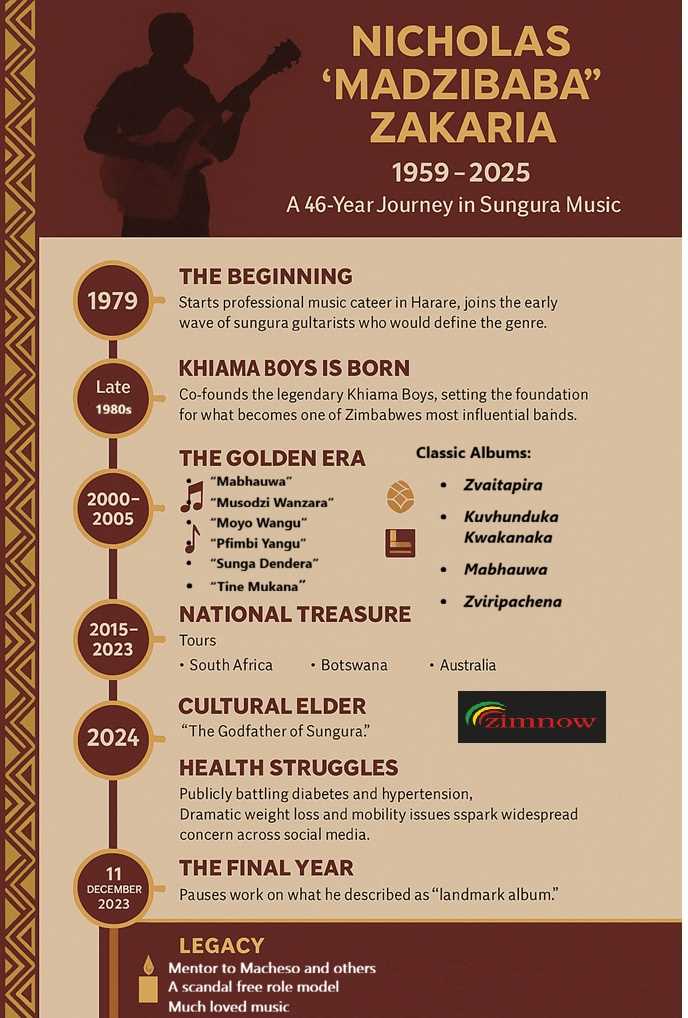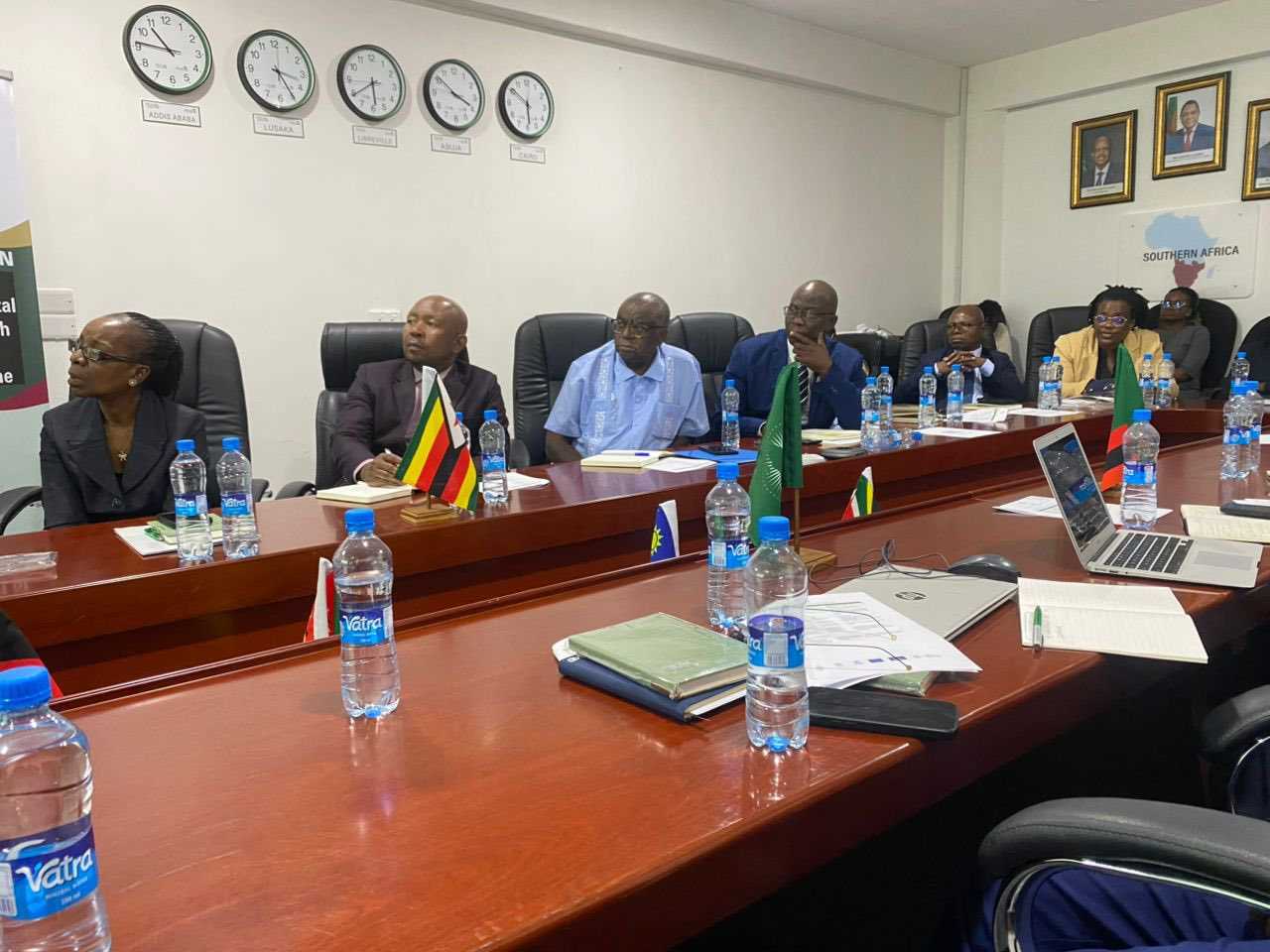
Munyaradzi Blessing Doma
ZIM NOW CORRESPONDENT
While cervical cancer is preventable and treatable, Zimbabwe continues to lose 2 000 women to the disease every year, hence there is need for more concerted efforts in fighting this scourge, Health and Child Care Minister, Dr Douglas Mombeshora has said.
Minister Mombeshora added that an estimated 3 000 new cases are diagnosed each year as the country is ranked fourth globally and in the region.
He was speaking during a two-day tour of cervical cancer service centres by a delegation from World Health Organisation Headquarters, led by Director, NCDs (Noncommunicable Diseases) Dr Bente Mikkelsen.
WHO defines cervical cancer as a cancer “that develops in a woman’s cervix (the entrance to the uterus from the vagina). Almost all cervical cancer cases (99 percent) are linked to infection with high-risk human papillomaviruses, an extremely common virus transmitted through sexual contact.”
Minister Mombeshora said cervical cancer remains a concerning public health challenge in the country as it has far-reaching implications for the health and well-being of citizens, particularly women and girls.
“The prevalence of cervical cancer in Zimbabwe is worryingly high, with an estimated 3 000 new cases diagnosed each year, out of which an estimated 2 000 women lose their battle to this disease.
“This means that more than 70 percent of people diagnosed with cervical cancer do not survive.
“In 2022, the World Health Organisation reported that cervical cancer was the leading cause of mortality among women in the African region, and Zimbabwe is ranked 4th globally and in the region for its high burden of the disease.
“Cervical cancer is a preventable and treatable disease. Every life lost to cervical cancer is a loss that could have been prevented through timely screening, vaccination, and access to quality healthcare.
“Today, I want to share a message of determination and hope for Zimbabwe as we proactively take the needed steps to protect our women and conquer this disease in our country.
“Over the past decade, Zimbabwe has been steadfast in its commitment to cervical cancer elimination, and today, we reaffirm our dedication to this cause and set our sights on the ambitious goal of eliminating cervical cancer by 2030,” said Minister Mombeshora.
He also revealed that the country’s fight against this disease is bold and multifaceted, ensuring equitable access to primary prevention, screening and early detection, as well as treatment and care.
“Since the inception of the National HPV vaccination program in 2018, remarkable strides have been made in achieving commendable coverage rates, which translate into over 2 million girls vaccinated to date.
“Although we experienced setbacks from the Covid-19 pandemic, which slowed down our progress, efforts have been made over the last two years to reach and vaccinate girls who were missed since 2019, and efforts are underway to develop an HPV Vaccination Revitalisation action plan which will ensure that no eligible girl is left behind.
“And that's why, guided by our National Cancer Prevention and Control Plan, we're making critical strides.
Related Stories
“Over 200 healthcare facilities across Zimbabwe now offer VIAC (Visual Inspection with Acetic Acid and Camera) screenings, and 60 locations provide HPV tests.
“These expanded services are empowering women with the tools for early detection.
“However, these services haven’t reached everyone in Zimbabwe yet.
“Women in rural areas and even some in our cities still face challenges getting screened. That’s why we're re-doubling our efforts to expand access and bridge the gap between urban and rural communities. We'll bring these lifesaving screenings closer to home through targeted outreach programs,” he said.
The minister further revealed that for those diagnosed with cervical cancer, they are stepping up the fight by investing in more radiotherapy equipment, which will give women access to the most effective treatments, no matter where they live in Zimbabwe.
“No woman will be left behind in this battle. Educating our young girls and women is key to winning this fight. That’s why we’re doubling down on education campaigns and community outreach. We’ll be spreading the word about cervical cancer, the signs to watch for, and the importance of early checkups. Knowledge is power, and we’re putting that power in the hands of every woman in Zimbabwe. None of our efforts would be possible without the collaboration of various government agencies, healthcare providers from public and private sectors, international partners, non-governmental organisations, religious sectors, and our communities.
“Each and every one of us has a role to play in eliminating cervical cancer. Let us rise to the challenge, united in purpose, to create a future where no woman in Zimbabwe dies from cervical cancer.
“This is a fight we can, and will, win. Our government is unwavering in its commitment to wiping out cervical cancer in Zimbabwe. We’ll keep this issue at the forefront and dedicate the resources needed to achieve that goal. Together, let's build a future free from cervical cancer, a future where every woman in Zimbabwe can reach her full potential.”
Doctor Prebo Barango, the Cross Cutting Lead for NCDs (Non-communicable diseases) and Special Initiatives at WHO Headquarters, said cervical cancer “is one of the few cancers that can be prevented through HPV vaccine and can be cured, usually the narrative is that cancers are a death sentence.
“For cervical cancer is one of those few cancers that can be cured if detected early and we have interventions that can help us screen women and be able to detect them early and treat them but we know that countries in Africa; infact of the 20 top countries with the highest burden of cervical cancer globally, 18 of these countries are in Africa including Zimbabwe.
“So there is inequity in terms of decisions for cervical cancer. We know also that for cervical cancer has a relationship with HIV, HIV positive women are at a higher risk of getting the HPV virus and when they get the HPV virus, they are less likely to be able to remove the virus from their system so they are more at risk of cervical cancer.
“Having said all this, it’s not doom and gloom, we can prevent cervical cancer. What WHO is doing, there are vaccines that are cost effective, it is called the HPV vaccine, giving girls between 9 and 15 years, giving them one shot of HPV vaccine, to protect them from getting cervical cancer later on in their life. Screening of women with HPV test is cost effective, the HPV test because we know that most women having an internal exam can be an incentive for women so the HPV DNA has a component of self-tests so the woman can collect the samples herself. There are many methods of making sure these samples are transported to the health facility and it’s tested, so the only ones that needs to come for exam are those that are positive and the majority of women will not be positive so we remove that need to get an internal exam.”
Dr Barango added that if women and girls are vaccinated, women screened and tested, then that will be one of the things that can be removed from the list of priorities but unfortunately, cervical cancer in most African countries remains either the number 1 or number 2 cause of cancer deaths in women.
He also revealed that there is a strong need for vaccination of girls and screening so that the cycle of poverty is broken when orphans are left behind and they fail to complete their education.
Following the tour of Parirenyatwa Group of Hospitals, Chinhoyi Provincial Hospital and Umboe Clinic in Makonde District, Dr Barango said they noticed that “there are challenges and each of this level has different challenges but the single threat that goes through all of them is that there is need to strengthen human resource availability across all this.
“There is also some need for support for equipment and technologies across these levels. The kind of equipment and technologies that will be needed will be depending on those levels, those are the key over riding things,” he added.


















Leave Comments